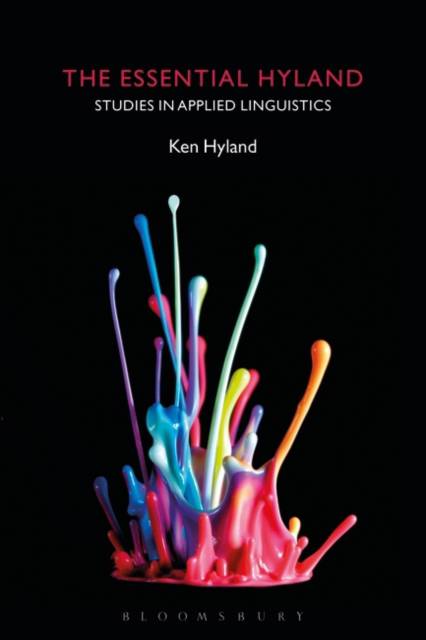
- Afhalen na 1 uur in een winkel met voorraad
- Gratis thuislevering in België vanaf € 30
- Ruim aanbod met 7 miljoen producten
- Afhalen na 1 uur in een winkel met voorraad
- Gratis thuislevering in België vanaf € 30
- Ruim aanbod met 7 miljoen producten
Zoeken
€ 228,95
+ 457 punten
Omschrijving
Writing in the academy has assumed huge importance in recent years as countless students and academics around the world must now gain fluency in the conventions of academic writing in English to understand their disciplines, to establish their careers or to successfully navigate their learning. Professor Ken J. Hyland has been a contributor to the literature on this topic for over 25 years, with 27 books and over 240 chapters and articles. This work has had considerable influence in shaping the direction of the field and generating papers and PhD theses from researchers around the world. Academic writing is a topic which has found its time, not only as a central concept in applied linguistics, but also as a key contribution to the sociology of scientific knowledge, library studies, and bibliometrics.
This book brings together Ken Hyland's most influential and cited papers. These are organised thematically to provide both an introduction to the study of academic discourse and an overview of his contribution to the understanding of how academics construct themselves, their disciplines and knowledge through written texts. Several leading figures from the field provide a brief commentary on the papers and the book includes an overall reflection by the author on the impact of the papers and the direction of the field together with linear notes on the specific papers in each section. The volume not only includes some of Hyland's best chapters and journal articles but the thoughts of disciplinary luminaries on both the ideas in the book and the general state and direction of the field.
This book brings together Ken Hyland's most influential and cited papers. These are organised thematically to provide both an introduction to the study of academic discourse and an overview of his contribution to the understanding of how academics construct themselves, their disciplines and knowledge through written texts. Several leading figures from the field provide a brief commentary on the papers and the book includes an overall reflection by the author on the impact of the papers and the direction of the field together with linear notes on the specific papers in each section. The volume not only includes some of Hyland's best chapters and journal articles but the thoughts of disciplinary luminaries on both the ideas in the book and the general state and direction of the field.
Specificaties
Betrokkenen
- Auteur(s):
- Uitgeverij:
Inhoud
- Aantal bladzijden:
- 520
- Taal:
- Engels
Eigenschappen
- Productcode (EAN):
- 9781350037908
- Verschijningsdatum:
- 25/01/2018
- Uitvoering:
- Hardcover
- Formaat:
- Genaaid
- Afmetingen:
- 156 mm x 234 mm
- Gewicht:
- 898 g

Alleen bij Standaard Boekhandel
+ 457 punten op je klantenkaart van Standaard Boekhandel
Beoordelingen
We publiceren alleen reviews die voldoen aan de voorwaarden voor reviews. Bekijk onze voorwaarden voor reviews.











